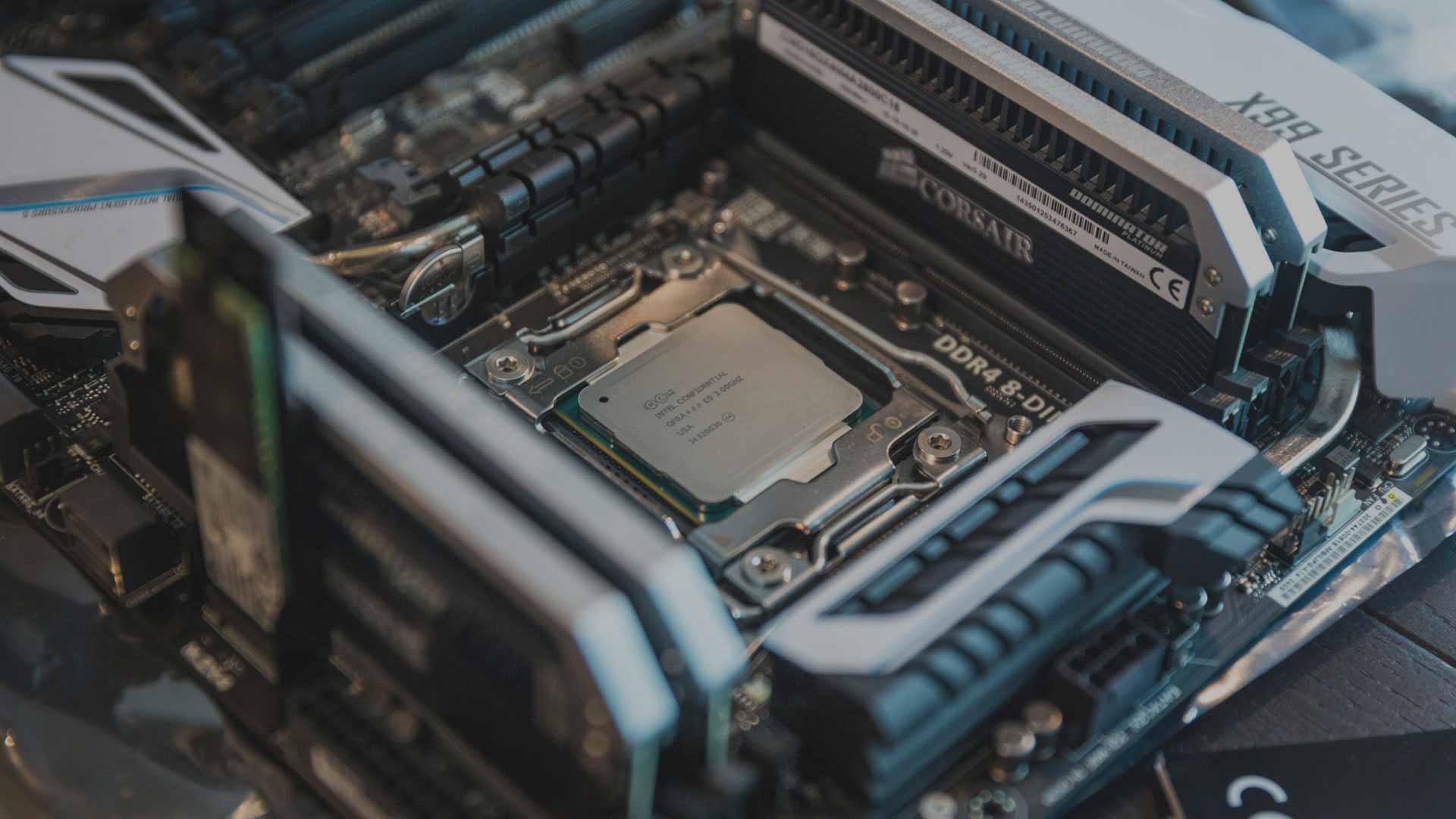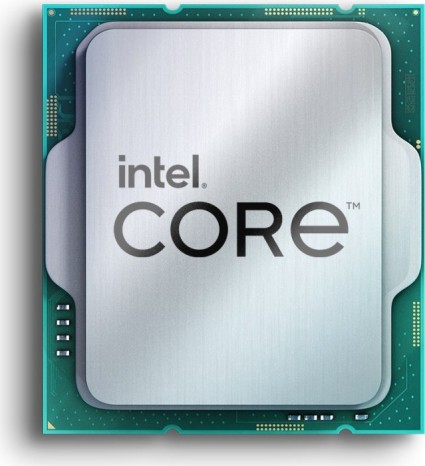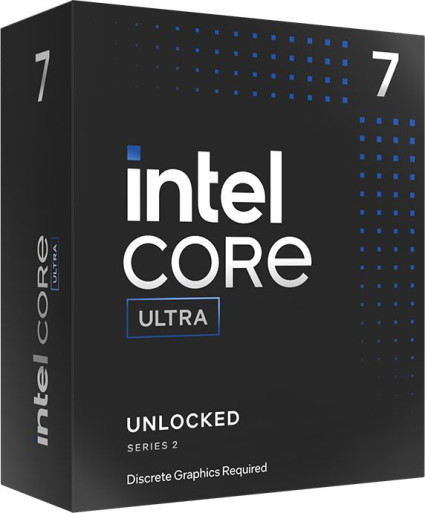
Intel Core i5-14400 (B0) vs. Intel Core Ultra 7 265KF
In diesem Vergleich von Intel Core i5-14400 (B0) versus Intel Core Ultra 7 265KF vergleichen wir die technischen Daten der beiden CPUs. Welcher Prozessor ist schneller? Hier gibt es FPS & Benchmarks in Gaming und Anwendungen.

Allgemeine Informationen
| Günstigster Preis |
|
|
| Serie | Intel Core i-14000 | Intel Core Ultra 200 |
| Chip-Architektur | Raptor Cove (P-Core) + Gracemont (E-Core) | Lion Cove (P-Core) + Skymont (E-Core) |
| Codename | Raptor Lake-S | Arrow Lake-S |
| Produktname | Intel Core i5-14400 (B0) | Intel Core Ultra 7 265KF |
Spezifikationen
Die Anzahl der Rechenkerne, die maximale Taktrate und die Größe des Cache können sich auf die Leistung in Spielen und Anwendungen auswirken. Mit 10 Kernen bietet der Intel Core i5-14400 (B0) deutlich weniger Kerne als der Intel Core Ultra 7 265KF mit 20 Rechenkernen. Der maximale Takt liegt beim Intel Core i5-14400 (B0) mit 4.70 GHz niedriger als beim Intel Core Ultra 7 265KF mit 5.50 GHz. Der Cache ist beim Intel Core i5-14400 (B0) mit 9.5 MB L2-Cache + 20 MB L3-Cache zu 36 MB L2-Cache + 30 MB L3-Cache deutlich kleiner als beim Intel Core Ultra 7 265KF.
| Kerne (Gesamt) | 10 | 20 |
| Anzahl P-Cores | 6C | 8C |
| Anzahl E-Cores | 4c | 12c |
| Basis-Takt | 2.50 GHz | 3.90 GHz |
| Takt P-Cores | 2.50 GHz | 3.90 GHz |
| Takt E-Cores | 1.80 GHz | 3.30 GHz |
| Turbo-Takt | 4.70 GHz | 5.50 (Turbo Boost Max 3.0) GHz |
| Turbo P-Cores | 4.70 GHz | 5.50 (Turbo Boost Max 3.0) GHz |
| Turbo E-Cores | 3.50 GHz | 4.60 GHz |
| Gesamter L2-Cache | 9.5 MB | 36 MB |
| Gesamter L3-Cache | 20 MB | 30 MB |
| Fertigung | Intel 7 | TSMC 3 nm |
| Rechenleistung | - | - |
| Leistungsaufnahme (TDP) | 65W (Processor Base Power) 148W (Maximum Turbo Power) |
125W (Processor Base Power) 250W (Maximum Turbo Power) |
Mainboard-Kompatibilität
Während der Intel Core i5-14400 (B0) den Intel 1700 Sockel nutzt, ist der Intel Core Ultra 7 265KF mit Mainboards für den Sockel Intel 1851 kompatibel. Die genaue Chipsatz-Eignung und die unterstützten PCIe-Lanes können Sie der Tabelle entnehmen.
| Sockel | Intel 1700 | Intel 1851 |
| Chipsatz-Eignung | B660, B760, H610, H610E, H670, H770, Q670, Q670E, R680E, W680, Z690, Z790 | Z890 |
| PCIe-3.0-Lanes | - | - |
| PCIe-4.0-Lanes | 4x | - |
| PCIe-5.0-Lanes | 16x | 24x (verfügbar: 20) |
RAM-Kompatibilität
Während Sie beim Intel Core i5-14400 (B0) bis zu 192 GB vom Typ DDR4/DDR5 im Dual Channel verbauen können, unterstützt der Intel Core Ultra 7 265KF bis zu 192 GB DDR5 Arbeitsspeicher.
| Speicher-Controller | DDR4/DDR5 | DDR5 |
| Anzahl Speicherkanäle | Dual Channel | Dual Channel |
| max. Speichermenge | 192 GB | 192 GB |
| ECC-Unterstützung | - | - |
Grafik
| iGPU | ✓ | - |
| iGPU-Modell | Intel UHD Graphics 730 | - |
| iGPU-Takt | 1,55GHz | - |
| iGPU-Einheiten | 1.5Xe/24EU/192SP | - |
| iGPU-Rechenleistung | 0.61 TFLOPS (FP32) | - |
| iGPU-Architektur | Xe-LP / Gen 12.2, Codename "Raptor Lake GT1" | Xe-LPG / Gen 12.7 |
| iGPU-Interface | DP 1.4a (7680x4320@60Hz), eDP 1.4b (5120x3200@120Hz), HDMI 2.1 (4096x2160@60Hz) | - |
| iGPU-Funktionen | 4x Display Support, 1x Codec Engine / Video Decode Box, Intel Clear Video HD, Intel Quick Sync Video, AV1 decode, H.265 encode/decode, VP9 encode/decode, HDCP 2.3, DirectX 12, OpenGL 4.5, OpenCL 3.0, Vulkan 1.0 | - |
Sonstiges
| Freier Multiplikator | - | ✓ |
| Stepping | B0, Spec Code: SRN46 | B0, Spec Code: SRQCU |
| Heatspreader-Kontaktmittel | - | - |
| Temparatur max. | 100°C (Tjunction) | 105°C (Tjunction) |
| Fernwartung | - | - |
| Einführung | 2024/Q1 (8.1.2024) | 2024/Q4 (24.10.2024) |
| Herstellergarantie | 3 Jahre bei Intel® Tray-Prozessoren beginnend mit den Desktop-Modellen der 12. Generation (Info DE/Info EN) | 3 Jahre bei Intel® Boxed-Prozessoren (Info DE/Info EN) |
CPU-Funktionen
| AES-NI | ✓ | ✓ |
| AVX | ✓ | ✓ |
| AVX2 | ✓ | ✓ |
| Boot Guard | ✓ | ✓ |
| CET | ✓ | ✓ |
| DL Boost | ✓ | ✓ |
| EIST | ✓ | ✓ |
| GNA 3.0 | ✓ | - |
| Idle States | ✓ | ✓ |
| Instruction Set | ✓ | ✓ |
| ISM | ✓ | ✓ |
| MBEC | ✓ | ✓ |
| Optane Memory Support | - | - |
| OS Guard | ✓ | ✓ |
| Secure Key | ✓ | ✓ |
| Speed Shift | ✓ | ✓ |
| SSE4.1 | ✓ | ✓ |
| SSE4.2 | ✓ | ✓ |
| Thermal Monitoring | ✓ | ✓ |
| VMD | ✓ | ✓ |
| VT-d | ✓ | ✓ |
| VT-x | ✓ | ✓ |
| VT-x EPT | ✓ | ✓ |
| XD Bit | ✓ | ✓ |
Spiele

- Intel Core Ultra 7 265KFAVG134.00 %1%136.45 %
- Intel Core i5-14400 (B0)AVG100.00 %1%100.00 %

- Intel Core i5-14400 (B0)AVG162.5 FPS1%114 FPS
- Intel Core Ultra 7 265KFAVG252.9 FPS1%216.9 FPS

- Intel Core i5-14400 (B0)AVG430.5 FPS1%253.3 FPS
- Intel Core Ultra 7 265KFAVG608.4 FPS1%291.6 FPS

- Intel Core i5-14400 (B0)AVG123.3 FPS1%82.8 FPS
- Intel Core Ultra 7 265KFAVG182.3 FPS1%130.9 FPS

- Intel Core i5-14400 (B0)AVG176.2 FPS1%122.6 FPS
- Intel Core Ultra 7 265KFAVG212.4 FPS1%144.3 FPS

- Intel Core i5-14400 (B0)AVG123.5 FPS1%90.7 FPS
- Intel Core Ultra 7 265KFAVG141.9 FPS1%106.3 FPS

- Intel Core i5-14400 (B0)AVG189.9 FPS1%121.4 FPS
- Intel Core Ultra 7 265KFAVG252.8 FPS1%174 FPS

- Intel Core i5-14400 (B0)AVG71.4 FPS1%52.6 FPS
- Intel Core Ultra 7 265KFAVG95.1 FPS1%67.6 FPS

- Intel Core i5-14400 (B0)AVG212 FPS1%123.2 FPS
- Intel Core Ultra 7 265KFAVG266 FPS1%149.5 FPS

- Intel Core Ultra 7 265KFAVG0.91 FPSIntel Core i5-14400 (B0)AVG1.37 FPS

- Intel Core Ultra 7 265KFAVG3.24 FPSIntel Core i5-14400 (B0)AVG2.25 FPS
Produktivität
Produktivität

- Intel Core Ultra 7 265KFAVG162.31 %Intel Core i5-14400 (B0)AVG100.00 %

- Intel Core Ultra 7 265KFPKT144932 PunkteIntel Core i5-14400 (B0)PKT83090 Punkte

- Intel Core Ultra 7 265KFPKT1446 PunkteIntel Core i5-14400 (B0)PKT1233 Punkte

- Intel Core Ultra 7 265KFPKT1005 PunkteIntel Core i5-14400 (B0)PKT721 Punkte

- Intel Core Ultra 7 265KFSEK161 SekundenIntel Core i5-14400 (B0)SEK398 Sekunden

- Intel Core Ultra 7 265KFPKT1942 PunkteIntel Core i5-14400 (B0)PKT868 Punkte

- Intel Core Ultra 7 265KFPKT3184 PunkteIntel Core i5-14400 (B0)PKT2407 Punkte

- Intel Core Ultra 7 265KFPKT21134 PunkteIntel Core i5-14400 (B0)PKT12680 Punkte

- Intel Core Ultra 7 265KFSEK47 SekundenIntel Core i5-14400 (B0)SEK90 Sekunden




